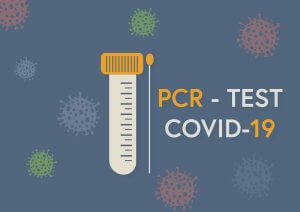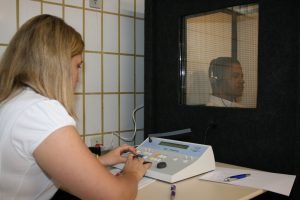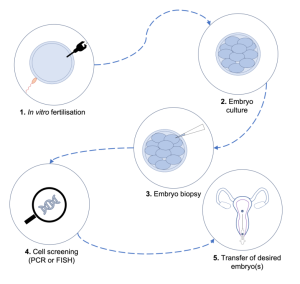There are many methods and techniques used in medical imaging. One of these techniques is the brain MRI scan, which enables health professionals to focus on different parts of the central nervous system and examine its anatomy and pathology. T1w, T2w, and Flair are the most common MRI sequences used in Brain MRI.
Magnetic resonance imaging or MRI is an advanced technique used to analyze the Brain’s anatomy and identify pathological conditions, such as neurodegenerative, demyelinating, and cerebrovascular diseases. Health professionals use MRI to examine brain activity under specific activities, including MRI and fMRI.
There is no radiation in the MRI, which makes it a safe procedure for patients with brain diseases. However, MRI relatively takes longer than CT scans, and that’s why health professionals do not use it for urgent conditions. In today’s article, we will talk about the brain section in MRI scans. Read on!
Lateral Ventricles
The lateral ventricles are two cavities located on the side of the midbrain. These cavities are prominent structures on the brain MRI scans. Health professional see lateral ventricles as hyper-intense structures on T2w because they contain a large amount of cerebrospinal fluid. Research shows that each ventricle is a 3D structure that consists of a front horn, the body, temporal and occipital horns.
The ventricular brain system has the largest frontal horns, and on MRI, a health professional sees them as two symmetrical concave structures. The interior portions of the frontal horns deviate from the midline, and the genu of corpus callosum separates them.
These portions are closer to each other posteriorly because the septum pellucidum separates them. The frontal horns’ lateral surfaces relate to the caudate nucleus’ head and body. Keep in mind that the body curves around the third ventricle and thalamus, which are parallel to the midline and superomedial to the fornix body.
Besides, the body dives laterally and inferiorly at the level of the splenium to form collateral trigone, which is a triangular structure. The trigone is immediately lateral to the corpus callosum. It gives off a horizontal and posterior projection known as the occipital horn. Likewise, it also gives off an anteroinferior projection known as the temporal horn.
Third Ventricle
The location of the third ventricle is between the thalami and lower part of the brain fornix. A health professional sees it as a slit-like hyper-intense structure on the brain MRI scan. The third ventricle communicates with the lateral ones via the foramina of Monro. It also interacts with the fourth ventricle through the aqueduct of Sylvius.
A health professional can access the pathology after identifying the ventricles. For instance, the squash or enlarge ventricles indicate the pathologies of the ventricular system. These include the hydrocephalus, tumors, hematomas, and abscesses that compress them.
A health professional likewise pays attention to any asymmetry, displacement, or midline shift, which indicate the mass effect. For instance, if there are any expansive masses, they will move the brain structure and lead to its herniation.
Thalamus and Basal Ganglia
Thalamus and basal ganglia are subcortical structures that go lateral from the ventricles. A doctor sees the thalamus as a dark grey mass on the axial MRI scan. It is found deep to the lateral ventricle and lateral to the third ventricle.
Besides, the caudate nucleus is a C-shaped structure with the head, body, and tail. The elongated C-shaped caudate nucleus lies lateral to the ventricles and anterior to the thalamus. The caudate nucleus’s head is in the convexity of the frontal horn and the body courses over the lateral ventricle floor.
On the brain MRI scan, the internal capsule lies lateral to the thalamus. A health professional sees it as a dark concave stripe on the scan. The internal capsule concavity is formed by both the anterior and posterior capsule limbs. The pallidum and putamen are lateral to the internal capsule that forms the lenticular nucleus.
The hyperintense basal ganglia indicate a pathological condition called an ischemic stroke. Remember, the internal capsule is a common area where hemorrhagic stroke appears. The health professional must check the interior and posterior limbs thoroughly for any signs of hyperintense regions.
Likewise, hyper-intense regions in the basal ganglia indicate Parkinson’s disease or any other neurodegenerative disorder. Research studies have shown that the cross-sectional cadaveric images are useful in tracking the relations between CNS structures and MRI scans.
Brain Lobes
It is important to identify changes in the signals that come from the brain tissue. That way, a health professional can determine its location with respect to brain lobes. It is because some health conditions happen in specific brain lobes.
There are six brain lobes, such as frontal, limbic, temporal, insular, parietal, and occipital lobes. The limbic and insular lobes are usually scanned using the MRI technique. The insular lobe is located lateral to the capsule of basal ganglia.
The insular lobe is a small area of the cerebral cortex and found at the meeting point of other lobes, including frontal, temporal, and parietal lobes. On the other hand, the limbic lobe is located deep to the frontal and parietal lobes. It is a highly functional unit of the Brain and often known as the limbic system.
It consists of amygdala, hippocampal formation, subcallosal area, and cingulate gyri. Hippocampus, dentate gyrus and subiculum are present in the hippocampal formation. The formation appears like a seahorse on a coronal section. It has a head that begins with the dentate gyrus.
On the axial brain MRI scan, it appears as the part of the temporal cortex, which is lateral to the pons. A health professional can find the dentate in the medial temporal lobe where it continues medially and deep into the temporal lobe.
If a health professional notices the hippocampus atrophy, it means the patient is experiencing epileptic seizures. It is crucial to look at the mesial temporal sclerosis, which is one of the leading causes of chronic temporal lobe epilepsy. Additionally, hippocampal atrophy is a key element in dementia and Alzheimer’s disease.
Cerebral Cortex
After a health professional has analyzed the Brain’s deep structures, he will examine the cerebral cortex to look for any changes in the grey and white matter. Keep in mind that the cytotoxic edema is the cause of loss of grey-white matter. As a result, it leads to cerebral ischemia and hypoxic-ischemic encephalopathy.
In case the doctor notices the accentuation of demarcation, it indicates the vasogenic edema, which occurs due to disruption in the blood-brain barriers in the cerebral tissues. These tissues surround the tumor and lead to the formation of extracellular edema, which increases the signal intensity from the white matter of the Brain.
A health professional will examine the MRI scan by looking at the gyri appearance of the cerebral cortex. In normal circumstances, the gyri of cerebral cortex appear tightly packed but still distinguishable from one another. On the other hand, if there are wider sulci between the gyri, it means the patient has Alzheimer’s disease.
Cerebellum
The cerebellum is another important part of the Brain located below the occipital lobe. It occupies the posterior cranial fossa and consist of left and right hemispheres. These hemispheres have an interconnected formation with the midline area known as the vermis. The cerebellum of the brain sits in the posterior cranial fossa through cerebellar tonsils.
A doctor, when analyzing the axial Brain MRI scan, sees the cerebellum going laterally from the midline. That way, he or she identifies the vermis parts as the central structure. There is a deep white matter on each side of the vermis that contains the deep cerebellar nuclei.
The cerebellar cortex is the outermost layer of the cerebellum. The deep horizontal sulci groove the cerebral cortex, leading to the unique appearance of the structure of Brain MRI scan. In simple words, the MRI scan shows the cerebellum like a multilayered structure that contains heavy sheaths of tissue. The empty spaces segregate these sheaths.
Meninges
Three membranes that envelop the human Brain and spinal cord are called the meninges. These structures are deep to superficial and appear arachnoid and dura mater on the MRI scan. Meninges membranes form three spaces, which are epidural, subdural, and subarachnoid space.
Besides, a car accident can cause a high-amplitude and abrupt movement of the head. As a result, it ruptures the Brain’s bridging veins. The Brain then collects blood in the dura mater to form a subdural hematoma. On the Brain MRI image, the doctor sees it as a half-moon shaped blood collection, which is at the skull convexities.
The skull fracture can lead to meningeal arteries damage, causing a sudden bloodstream that separates the dura mater from the bone. As a result, it forms the epidural hematoma, which is seen as a lens-shaped blood collection at the cranial structures. It is the place where dura mater attaches to the bone.
A ruptured aneurysm causes the subarachnoid hemorrhage on the blood vessel in intracranial structures. It is an urgent neurological condition because its mortality rates 50% high in affected individuals.
That’s why health professionals diagnose this condition by CT or digital subtraction angiography. On the other hand, MRI is useful in figuring out the location of the vascular malformations.
Brainstem
It is the Brain’s distal part, which extends the Brain’s base to the spinal cord. The human Brain consist of structures, such as the midbrain, pons, and medulla oblongata from superior to inferior locations. Each structure features a wide variety of sub-structures, including the cranial nerve nuclei.
A health professional often analyzes the axial section of the MRI scan to look for abnormalities. On the MRI scan, the axial section of a person’s midbrain looks like the Mickey Mouse, a famous Disney cartoon character.
A doctor won’t be able to distinguish the shape of the brainstem on normal scans clearly. However, he or she can map the brainstem through the Mickey Mouse map. For instance, the cerebral peduncles are seen as the mouse’s ears. Likewise, the two red nuclei, which are not easily seen in the Brain MRI images are seen as the eyes of the Mikey Mouse.
The oculomotor nerve’s nucleus and the medial longitudinal fascicle are often seen as the Mikey Mouse’s nostrils. Furthermore, the periaqueductal grey matter and the cerebral aqueduct are important parts of the midbrain, which can be seen as the mouth of the Mikey Mouse. So, using the Mickey Mouse map, doctors can quickly see the structure and analyze the images for any abnormalities.
Final Words
Brain MRI scans can detect various conditions, including inflammation, bleeding, cysts, tumors, as well as structural and developmental abnormalities. It also detects other conditions like infections, blood vessel problems, injuries, and stroke.



